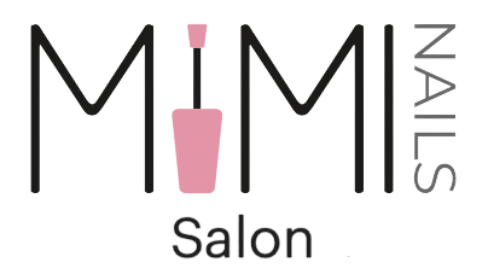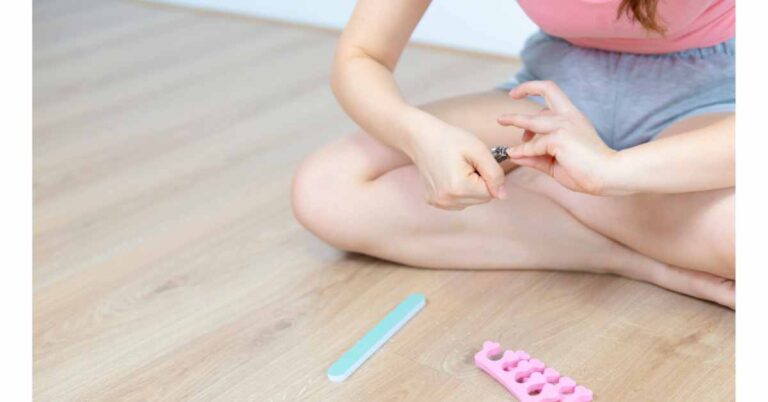Top 9 At-Home Nail Care Tips You Must Know
If you don’t have time to go to a nail salon doing a manicure or pedicure, you can still take care of your nail by yourself!
However, Mimi Nails recommends you visit a certified nail salon with decent experience to take care of your nails.
Here are 9 tips from our nail care professionals to help you take care of your nails!
1. Don’t cut cuticles on your own
You can regularly trim your nails at home, but do not cut the cuticles on the nails by yourself.
This is because these cuticles are a natural barrier to prevent fungi and bacteria from invading. Cutting off the cuticles improperly can destroy the protective layer of the nails.
This not only makes the cuticles look worse, but leaves them red, swollen, and even crushed. Not only does this make the nail infected and uncomfortable, but it can also lead to permanent nail damage.
2. Know when to use nail hardener
Experts recommend that nail hardener products are not clinically studied, so most of these products are not scientifically recommended. Unless your nails are weak and fragile, you need to use these substances.
However, using a nail hardener is mostly beneficial if applied correctly by a nail expert. So, always consult a nail technician to know when you should use hardeners.
3. Don’t forget to moisturize your nails and cuticles
While there is little medical data to show that moisturizing your nails will help them grow longer, in fact, moisturizing your nails can actually help improve the cuticle around your nails, while also keeping your nails healthy. broken due to lack of moisture.
If your nails break easily, this could be a sign that your nails need moisture. Applying lotion around the cuticle will not only help moisturize the entire nail, but also reduce the rate of chipping, cracking, and splitting.
4. Supplement nutrients for nails
According to a number of studies, researchers have found that supplementing with biotin (a member of the B vitamin family) helps increase nail thickness and also helps strengthen nails, not brittle, brittle.
Some nail products also contain silicones and MSM (Methyl Sulfonyl Methane, an organic form of sulfur) supplements. These two nutrients are closely related to nail health.
You can consider using vitamins and nutrients for nails.
5. Don’t use rough nail files by yourself
Using nail files improperly can cause cracks, even broken nails, or worse. If you can only do it yourself, you should file nails in only one direction, and file slowly and steadily to reduce the risk of damage and breakage. And don’t forget to pick the softest one.
6. Avoid excessive hand wash liquid and cleaning chemicals
Washing your hands too much can wreak havoc on your nails. If you’re in a job that requires frequent hand washing, you should use moisturizer as much as possible and apply it around your cuticles several times a day.
When doing household chores or doing laundry, to minimize your exposure to harsh chemicals that damage your nails, such as dishwashing liquid or laundry detergent, you should wear rubber gloves whenever possible.
7. Consider before changing your shampoo
Most women know the shampoo they’re using isn’t right for their hair, but little do they realize it might not be right for their nails, even if their hair is so beautiful and gorgeous.
Great to use that shampoo. Experts say this is especially true of detergent-based shampoos, or shampoos for people with oily hair, that are designed to separate fats and other natural oils from the scalp.
If your nails are very dry and you are using any shampoo products that have an oil-control effect on oily skin, that could also be the cause of your dry nails.
8. Don’t forget to take care of your toenails
With all the nail tips above, you can also apply them to your toenails. Because the feet often have to wear shoes in a dark and humid environment, the fungus will have easier conditions to grow.
Experts recommend that if you regularly take care of your toenails, you should use your own pedicure tools and never damage the bottom of the nail or around the cuticles.
Furthermore, cutting toenails at two angles – rather than keeping them straight – increases the risk of toenails growing into the skin, which can be painful and sometimes develop an infection.
9. Nail conditions and health-related problems detection
The American Academy of Dermatology recommends that you pay attention to the condition of your nails because they can sometimes reflect a problem with your overall health. Here are some health signs based on your nail performance:
- White nails: liver disease;
- Half pink half white nails: kidney disease;
- Yellow and thickened nails slow down re-growth: lung disease;
- Pale nails: anemia;
- Yellow fingernails: diabetes.
When you find any unusual problems on your nails and suspect your health problems, discuss them with your nail care expert or even doctor to get an accurate diagnosis.

